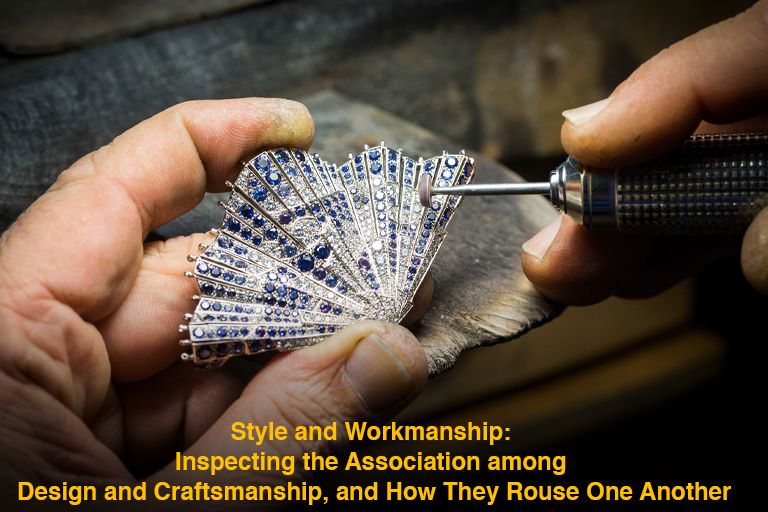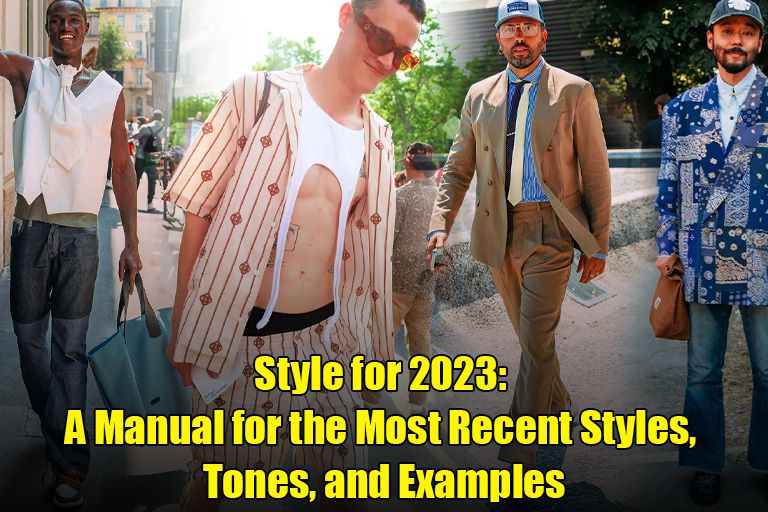Style and Workmanship: Inspecting the Association among Design and Craftsmanship, and How They Rouse One Another
Style and craftsmanship have for quite some time been entwined, impacting and rousing each other in a wonderful cooperative relationship. The two fields depend on inventiveness, self-articulation, and the quest for stylish magnificence. The association between style and workmanship is a rich embroidery woven since forever ago, and it proceeds to develop and move contemporary fashioners and craftsmen.
- Fashion is a type of wearable craftsmanship. From the earliest civic establishments to the cutting-edge runways, clothing has been utilized as a vehicle for self-articulation and social character. In antiquated times, articles of clothing were decorated with multifaceted examples and embellishments, changing them into visual works of art. The Egyptians utilized textures to represent status and social pecking order, while the mind-boggling curtain of old Greek pieces of clothing turned into an artistic expression in itself. The combination of workmanship and design kept on advancing through the Renaissance, Extravagant, and Ornate periods, with intricate outfits mirroring the imaginative developments of the time.
- In the twentieth hundred years, craftsmanship developments like Oddity, Cubism, and Pop Workmanship carried another aspect to the connection between style and craftsmanship. Craftsmen like Salvador Dalí and Pablo Picasso worked together with style architects, obscuring the lines between workmanship and design. These joint efforts brought about pivotal plans that tested regular ideas of excellence and style. Essentially, Pop Workmanship symbols like Andy Warhol turned regular items, including dresses and frills, into show-stoppers, lifting the everyday to the exceptional.
- The impact of workmanship on style is underway by famous design creators. Fashioners like Yves Holy person Laurent, who was intensely impacted by crafted by Mondrian, made dresses including a variety of hindered mathematical examples, suggestive of the craftsman’s notable pieces. Alexander McQueen, known for his vanguard plans, drew motivation from contemporary workmanship and integrated unusual materials and strategies into his runway shows.
- Fashion, thusly, rouses craftsmanship by giving a steady wellspring of motivation for specialists across various mediums. Painters, picture takers, and artists have for quite some time been charmed by design’s capacity to convey feelings, social critique, and social stories. Design photography, specifically, obscures the limits among workmanship and trade, changing style crusades into outwardly dazzling stories that enamor and incite thought.
- The appearance of virtual entertainment and the democratization of design have additionally fortified the association between style and workmanship. Stages like Instagram have become virtual displays, exhibiting the innovative articulations of both laid-out and arising style fashioners and specialists. Specialists track down motivation in the intricate plans, tones, and surfaces of style, while architects gain openness and criticism from the craftsmanship of the local area.
- The cooperation between design and workmanship isn’t restricted to the domain of high style. Streetwear, with its underlying foundations in metropolitan culture and workmanship, has arisen as a strong power in contemporary design. Road craftsmen like Shepard Fairey and KAWS have teamed up with famous streetwear brands, obscuring the limits between craftsmanship, design, and trade. This combination has prompted special joint efforts, restricted release assortments, and another flood of innovativeness that embraces the combination of the two universes.
- Furthermore, the association between design and workmanship stretches out past the visual domain. The design shows and runway introductions have become vivid encounters that obscure the lines between style, execution craftsmanship, and establishment. Creators team up with choreographers, set fashioners, and performers to make a multisensory experience that moves the crowd into an alternate world. These style scenes frequently draw motivation from craftsmanship developments, verifiable periods, or social references, bringing about outwardly staggering and provocative introductions.
- Fashion likewise assumes a critical part in testing cultural standards and pushing for social change. Over the entire course of time, planners have involved design as a medium to offer political and social expressions. From Vivienne Westwood’s troublemaker-propelled plans rocking the boat to the ascent of feasible and moral style, fashioners persistently endeavor to resolve significant issues through their manifestations. As of late, there has been a flood in coordinated efforts between design brands and specialists who advocate for civil rights and manageability, utilizing their foundation to bring issues to light and drive positive change.
- Artists, then again, track down motivation in the consistently advancing universe of design. They investigate the idea of personality, self-perception, and the thought of self through their craft. Style turns into a device for craftsmen to address cultural standards, challenge generalizations, and investigate subjects of excellence, orientation, and social personality. Imaginative mediums like composition, model, and execution frequently consolidate components of design, obscuring the limits between craftsmanship and the ordinary.
- The advantageous connection between design and workmanship additionally reaches out to the domain of craftsmanship. The two fields require expertise, strategy, and scrupulousness. High fashion, for instance, is viewed as the zenith of style craftsmanship, with articles of clothing fastidiously created by gifted craftsmen. Likewise, works of art like weaving, material planning, and printmaking draw upon a similar degree of mastery and commitment. The convergence of craftsmanship in style and workmanship features the magnificence of high-quality manifestations and the worth of distinctive strategies in an undeniably computerized world.
- Moreover, the association between style and workmanship reaches out past individual pieces of clothing or craftsmanship. Design displays and craftsmanship establishments devoted to investigating the crossing point of these two disciplines have become progressively well-known. Exhibition halls and displays curate shows that grandstand the development of style and its imaginative impacts, featuring the inventive exchange among creators and specialists since forever ago. These presentations do not just teach people in general about the connection between style and workmanship yet additionally commend the craftsmanship, advancement, and social meaning of the two fields.
Conclusion:
The association between style and workmanship is a diverse and consistently developing relationship that penetrates different parts of the two fields. From displays and establishments to outfit plans, cutting-edge design, style representation, and computerized joint efforts, design, and workmanship persistently rouse and impact one another. This advantageous relationship enhances the imaginative scene as well as considers the investigation of personality, self-articulation, social stories, and cultural issues. As design and craftsmanship keep on meeting, the limits between them will obscure considerably further, making additional opportunities and pushing the limits of inventiveness and development.
Read more – 5 Natural Skin Care Tips You Can Try at Home
Read more – REVITALIZE YOUR SKIN IN JUST 7 DAYS WITH THESE GLOWING SKIN CHALLENGE FOODS







